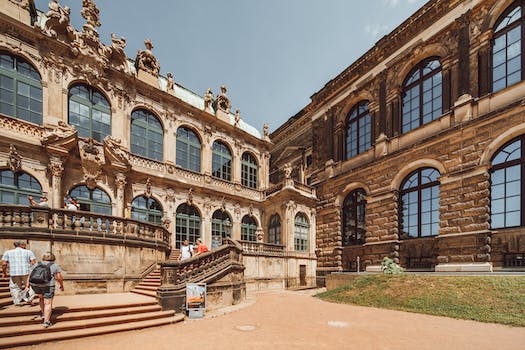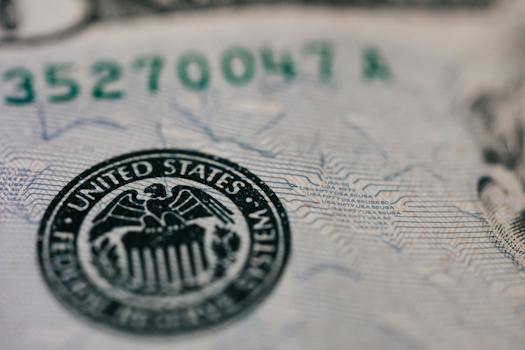

-
Table of Contents
"Dresden: Rising from the ashes, embracing a new era of resilience and renaissance."
Introduction
Dresden, the capital city of the German state of Saxony, has a rich history that spans centuries. From its origins as a medieval trading hub to its devastating destruction during World War II, Dresden has experienced both resilience and renaissance. This article explores the remarkable journey of Dresden, highlighting its ability to rebuild and reinvent itself, ultimately emerging as a vibrant cultural and economic center in modern-day Germany.
The Historical Significance of Dresden's Resilience and Renaissance
The city of Dresden, located in eastern Germany, has a rich and complex history that spans centuries. From its origins as a small Slavic settlement to its transformation into a thriving cultural and economic center, Dresden has experienced both triumph and tragedy. One of the most significant chapters in Dresden's history is its resilience and renaissance after the devastating bombings of World War II.
Dresden's historical significance lies not only in its architectural beauty but also in its ability to rise from the ashes. Prior to the war, Dresden was known as the "Florence on the Elbe" due to its stunning Baroque and Rococo architecture. The city was home to magnificent palaces, churches, and museums, which attracted visitors from all over the world. However, this all changed on the night of February 13, 1945, when Allied forces launched a massive bombing campaign that reduced much of Dresden to rubble.
The destruction of Dresden was a devastating blow to its residents and a loss for the world. The city's cultural heritage was nearly wiped out, and countless lives were lost. However, in the face of such destruction, Dresden's resilience shone through. The people of Dresden refused to be defeated, and they began the arduous task of rebuilding their city from scratch.
The reconstruction of Dresden was a monumental undertaking that required immense effort and determination. Architects, engineers, and craftsmen worked tirelessly to restore the city's iconic landmarks, such as the Frauenkirche and the Semperoper. The process was slow and painstaking, but the end result was a testament to the indomitable spirit of the people of Dresden.
Today, Dresden stands as a symbol of resilience and rebirth. The city's historic center, which was once reduced to rubble, has been meticulously restored to its former glory. Visitors can now stroll along the banks of the Elbe River and marvel at the stunning architecture that has been lovingly reconstructed. The Frauenkirche, with its distinctive dome, stands as a powerful symbol of Dresden's resilience, having been rebuilt using original stones salvaged from the ruins.
Dresden's renaissance is not limited to its physical reconstruction. The city has also experienced a cultural revival, with a vibrant arts scene and a thriving creative community. The Semperoper, one of the world's most renowned opera houses, has regained its status as a cultural hub, attracting top performers from around the globe. The city's museums, such as the Albertinum and the Zwinger, showcase a rich collection of art and artifacts that tell the story of Dresden's past and present.
The resilience and renaissance of Dresden serve as a reminder of the power of human determination and the enduring spirit of a community. Despite the immense challenges they faced, the people of Dresden refused to let their city be defined by its destruction. Instead, they chose to rebuild and reclaim their cultural heritage, creating a city that is not only beautiful but also a testament to the strength of the human spirit.
In conclusion, the historical significance of Dresden's resilience and renaissance cannot be overstated. The city's ability to rise from the ashes and rebuild itself is a testament to the indomitable spirit of its people. Today, Dresden stands as a symbol of resilience and rebirth, a city that has not only restored its physical beauty but also revitalized its cultural heritage. The story of Dresden serves as an inspiration to us all, reminding us of the power of determination and the enduring spirit of a community.
Exploring Dresden's Architectural Renaissance: From Baroque to Modern

The city of Dresden, located in eastern Germany, has a rich history that is reflected in its architecture. From the Baroque period to the modern era, Dresden has experienced a remarkable architectural renaissance that showcases its resilience and ability to adapt to changing times.
One of the most iconic architectural styles in Dresden is Baroque. This style flourished in the 17th and 18th centuries and is characterized by its ornate decorations and grandeur. The Zwinger Palace, a masterpiece of Baroque architecture, is a prime example of this style. Its stunning facades, intricate sculptures, and beautifully landscaped gardens make it a must-visit attraction for tourists and locals alike.
However, Dresden's architectural landscape underwent a dramatic transformation during World War II. The city was heavily bombed, and much of its historic architecture was reduced to rubble. The destruction was devastating, but it did not break the spirit of the people of Dresden. They were determined to rebuild their city and restore its former glory.
The post-war period saw the emergence of a new architectural movement in Dresden. The city embraced modernism, a style that emphasized functionality and simplicity. The Kulturpalast, a cultural center built in the 1960s, is a prime example of this architectural shift. Its clean lines and minimalist design reflect the ideals of the modernist movement.
However, the modernist architecture of the post-war period did not completely overshadow Dresden's rich history. The city made a conscious effort to preserve and restore its historic buildings. The Frauenkirche, a symbol of Dresden's resilience, is a testament to this commitment. The church, which was destroyed during the war, was painstakingly reconstructed using original materials and techniques. Today, it stands as a powerful reminder of the city's ability to rise from the ashes.
In recent years, Dresden has experienced a resurgence in architectural innovation. The city has become a hub for contemporary architecture, with new buildings that push the boundaries of design. The Transparent Factory, a production facility for Volkswagen, is a prime example of this trend. Its glass walls and futuristic design make it a striking addition to Dresden's architectural landscape.
Dresden's architectural renaissance is not limited to new buildings. The city has also seen a revival of its historic quarters. The Neumarkt, a square that was heavily damaged during the war, has been meticulously reconstructed. Today, it is a vibrant hub of activity, with shops, restaurants, and cultural institutions that pay homage to Dresden's past while embracing the present.
The resilience and renaissance of Dresden's architecture is a testament to the city's ability to adapt and evolve. From the grandeur of Baroque to the simplicity of modernism, Dresden's architectural landscape tells a story of resilience, innovation, and the enduring spirit of its people. Whether exploring the historic buildings or marveling at the contemporary designs, visitors to Dresden are sure to be captivated by the city's architectural treasures.
Cultural Revival in Dresden: Celebrating Art, Music, and Literature
The Resilience and Renaissance of Dresden
Cultural Revival in Dresden: Celebrating Art, Music, and Literature
Dresden, the capital city of the German state of Saxony, has a rich history that dates back centuries. Known for its stunning architecture and cultural heritage, the city has experienced both triumph and tragedy throughout the years. From the devastating bombings during World War II to the subsequent years of Soviet occupation, Dresden has faced numerous challenges. However, it is the resilience and determination of its people that have led to a remarkable cultural revival in recent decades.
One of the most notable aspects of Dresden's cultural revival is its thriving art scene. The city is home to numerous art galleries and museums, showcasing a wide range of artistic styles and periods. The Gemäldegalerie Alte Meister, located in the Semperbau of the Zwinger Palace, houses an impressive collection of European paintings from the 15th to the 18th centuries. Visitors can admire masterpieces by renowned artists such as Raphael, Rembrandt, and Vermeer. The Albertinum, another prominent museum, focuses on modern and contemporary art, featuring works by artists like Gerhard Richter and Neo Rauch. These institutions not only preserve and display art but also actively promote cultural exchange through temporary exhibitions and educational programs.
In addition to visual arts, Dresden has also become a hub for music enthusiasts. The city is famous for its annual Dresden Music Festival, which attracts renowned musicians and orchestras from around the world. Held in various historic venues, such as the Semperoper and the Frauenkirche, the festival offers a diverse program that includes classical, jazz, and world music performances. The Dresden Philharmonic Orchestra, founded in 1870, is another cultural gem of the city. With its exceptional musicians and captivating repertoire, the orchestra continues to captivate audiences with its world-class performances.
Literature has also played a significant role in Dresden's cultural revival. The city has a long-standing literary tradition, with notable authors such as Erich Kästner and Kurt Vonnegut having ties to Dresden. The Saxon State and University Library Dresden, one of the largest and oldest libraries in Germany, houses an extensive collection of books, manuscripts, and archives. It serves as a valuable resource for researchers and scholars, contributing to the preservation and dissemination of knowledge. Furthermore, Dresden hosts various literary events and festivals throughout the year, providing a platform for both established and emerging writers to showcase their work.
The cultural revival in Dresden has not only brought about a renewed appreciation for the arts but has also had a positive impact on the city's economy. The influx of tourists drawn to Dresden's cultural offerings has boosted the local hospitality and tourism industries. Hotels, restaurants, and shops have flourished, creating employment opportunities and contributing to the overall prosperity of the city. Moreover, the cultural sector has become a driving force for urban development, with the restoration of historic buildings and the creation of new cultural spaces.
In conclusion, Dresden's resilience and determination have led to a remarkable cultural revival in recent decades. The city's thriving art scene, vibrant music festivals, and literary traditions have attracted visitors from around the world. This cultural revival has not only enriched the lives of its residents but has also had a positive impact on the city's economy. Dresden's journey from devastation to cultural renaissance serves as an inspiring example of the power of resilience and the enduring value of art, music, and literature.
Q&A
1. What is the main theme of "The Resilience and Renaissance of Dresden"?
The main theme is the city of Dresden's ability to recover and thrive after significant destruction during World War II.
2. When did the resilience and renaissance of Dresden occur?
The resilience and renaissance of Dresden occurred in the post-World War II era, particularly from the 1990s onwards.
3. What factors contributed to the resilience and renaissance of Dresden?
Factors that contributed to the resilience and renaissance of Dresden include extensive reconstruction efforts, investment in cultural and artistic initiatives, and the reunification of Germany.
Conclusion
In conclusion, the city of Dresden has demonstrated remarkable resilience and undergone a renaissance in the face of adversity. Despite the devastating bombings during World War II, Dresden has managed to rebuild and restore its historic landmarks, showcasing its rich cultural heritage. The city's commitment to preserving its architectural treasures, coupled with its vibrant arts and cultural scene, has contributed to its revival as a major tourist destination. Dresden's ability to overcome challenges and reinvent itself stands as a testament to its resilience and determination.












